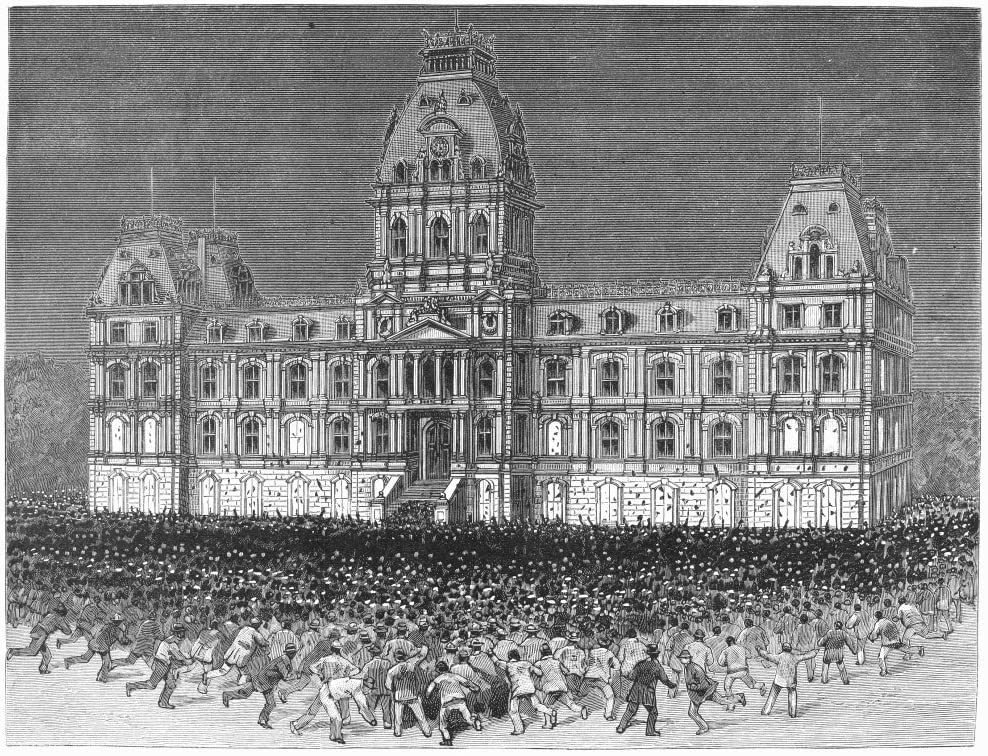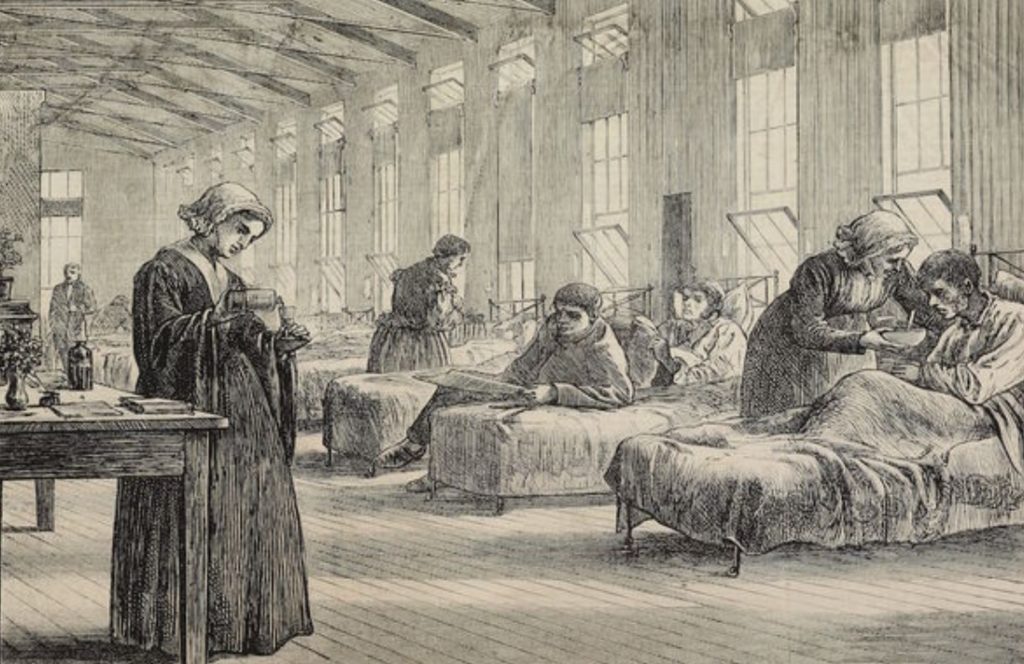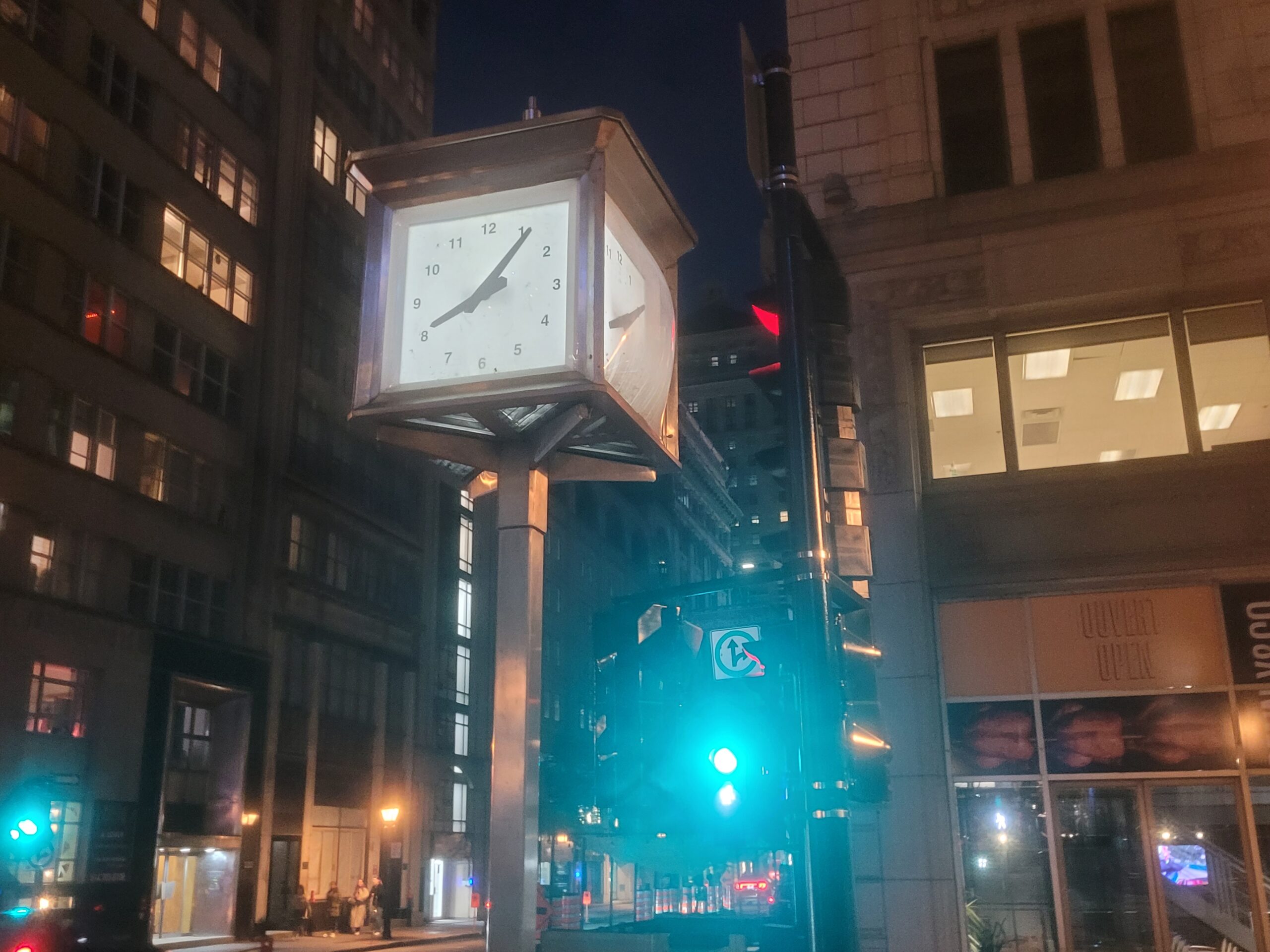While noted for their historical charm and timekeeping abilities, some of Montreal’s clocks are reputed to be haunted. Most of Montreal’s haunted clocks are located on St. James Street, an area associated with the extreme desecration of French colonial cemeteries by various financial corporations.
Welcome to the seventy-eighth installment of the Haunted Montreal Blog!
With over 500 documented ghost stories, Montreal is easily the most haunted city in Canada, if not all of North America. Haunted Montreal dedicates itself to researching these paranormal tales, and the Haunted Montreal Blog unveils a newly researched Montreal ghost story on the 13th of every month!
This service is free and you can sign up to our mailing list (top, right-hand corner for desktops and at the bottom for mobile devices) if you wish to receive it every month on the 13th! The blog is published in both English and French!

The Public Health Department is allowing bars to slowly re-open, so we are re-booting our Haunted Pub Crawl as of Sunday, March 27th. It will be offered every Sunday at 3 pm in English and on the last Sunday of the month at 4 pm in French.
In April, we are also re-starting our other ghost walks and paranormal investigation as both public and private tours:
Haunted Griffintown Ghost Walk
Paranormal Investigation in the Old Sainte Antoine Cemetery
Our Virtual Ghost Tour is also available on demand!
Want to give the gift of a haunted experience for the 2022 season?

You can now order a Haunted Montreal Gift Certificate through our website. They are redeemable via Eventbrite for any of our in-person or virtual experiences. There’s no expiration date.
Lastly, we now have an online store for those interested in Haunted Montreal merchandise. More details are below in our Company News section!
This month we explore the smallpox ghosts who haunt the Faubourg Saint-Louis in Old Montreal!
Haunted Research
Heading eastwards from the Old Montreal’s Champ-de-Mars, Rue Saint-Louis is a quaint but neglected street that does not appear on the tourist circuit. Perhaps it is just as well, given the disturbing ghosts who allegedly haunt the area. During the smallpox epidemic of 1885, when the neighborhood of Faubourg Saint-Louis was at the heart of a largely French-speaking slum, Saint-Louis Street was one of the most infected parts of the city.

It witnessed a large number of deaths due to the terrible disease, including well over a thousand children.
The tragedy was triggered in late February, 1885 when a conductor on the Grand Trunk Railway named George Longely arrived in Montreal showing symptoms of smallpox.

When he arrived at arrived at Bonaventure Station, he was feverish and covered with red pustules, most of them bursting, all over his hands, face, chest and arms. He was immediately admitted to the Hôtel-Dieu Hospital in Montreal.
While Longley would ultimately survive, his puss-soaked bedding infected an Acadian girl named Pélagie Robichaud, who worked in the laundry. She was the first to victim of the 1885 smallpox epidemic. Her burial certificate indicates that she passed away on April 2nd.

During the era, smallpox was seen as the worst possible disease. Not only was it extremely infectious, but it could disfigure and even destroy people within a week or two.
Infection was caused by breathing contaminated air or touching something that had been in contact with the variola virus.

Following a 12 day incubation period, tiny red pustules would appear on the victim, and eventually spread all over the body. These would soon burst and begin oozing pus and ravaging the body. In about a third of cases, the disease killed its victim with days.
For those who survived, the victims were often left disabled and permanently disfigured, with deep pock marks replacing the old pustules once they had healed.

By mid-April it was clear that smallpox was spreading throughout the hospital and that it could not be contained. The city’s Board of Health made a catastrophic error in discharging all patients who did not appear sick. Many of them were in various stages of incubation – and they spread the virus all over the streets of Montreal to propagate.
As the summer arrived, the cases began to explode. The Montreal Board of Health began offering vaccinations against the disease. The practice of vaccination, developed by researcher Edward Jenner in England in 1796, was widespread by that time.

However, this revolutionary medical science was highly distrusted by Montreal’s French-speaking Catholic population at the time, among others globally. Indeed, in 1802, a cartoon of the early controversy surrounding Edward Jenner’s vaccination theory was published. It showed how using his cowpox-derived smallpox vaccine triggered cattle to emerge from his patients.

Whatever the case, while English and Scottish Protestants along with Irish Catholics generally supported the vaccination drive, the majority of French Catholics were opposed to this “British science”. It is worth remembering that the ancestors of these French Catholics were colonized by the British in 1760 – and had a healthy mistrust of the colonial authorities.
It also did not help that 19th century’s anti-vaxxers would make the 21st century’s Covid deniers look pale in comparison. Dr. Joseph Coderre, a respected physician-professor, not only claimed the smallpox vaccine wouldn’t prevent smallpox but warned it would also cause syphilis. Another quack was Joseph Émery-Coderre, an eminent doctor who also campaigned against compulsory vaccination.

As the summer wore on, the smallpox cases continued to explode. Montreal was gaining the reputation of a “City of Plague”, causing many to avoid it all costs. People infected with smallpox were seen roaming the streets along with their children, despite being highly contagious.
By July, the disease had spread across the city and every night more and more bodies were being carted up to Côte des Neiges cemetery in hearses marked “SMALLPOX-PICOTTE.” When Sir Francis Hincks, a former prime minister of the Province of Canada, died of smallpox, his body was hastily buried at the crack of dawn with only a handful of family members in attendance.

With the coming of the autumn, Montreal’s smallpox deaths rose past 3,000 residents. The city’s Board of Health decided to make vaccinations compulsory as of September 28, 1885. The board’s chairman tried to counter increasing amounts of misinformation. He said:
“It does not mean that people are to be seized and manacled and so vaccinated by force…It means that the vaccinator will go to the door of a house and ask for proof that all residing there are vaccinated.”

According to the Montreal Gazette, those who refused to be vaccinated would be fined and certainly not dragged away to the city gaol.
However, attempts by public health officials to enforce vaccination standards or even to carry away the dead were met with fierce resistance. Sanitation constables were assaulted as they removed corpses from the most infected neighborhoods, including Faubourg Saint-Louis. Often, when the authorities put up yellow and black warning placards on infected homes, residents would tear them down.

When constables arrived at the home of a woman named Madame Chaput at 427 Sainte-Catherine Street to placard her home, she ripped it out of their hands.
As police tried to restrain Madame Chaput, her husband emerged and started shouting that his wife was being assaulted.

An angry crowd began to gather and the constables were forced to retreat. However, the mob followed them back to the the Health Board’s East End office and surrounded it. Around 7 pm, angry protesters began throwing rocks through the windows of the office. When the police chief tried to rush inside through the mob, he “was knocked down with a blow from a stick and kicked till nearly insensible,” the Montreal Gazette reported.
As the mob swelled to more than 2,000, the rioters began a rampage through the streets of Montreal. They smashed the windows of pharmacies selling the vaccine as well as the homes of doctors who supported the vaccination drive.

After about an hour of rioting, the howling mob began moving towards City Hall, shouting “Kill the vaccinators!”
When the mob descended on City Hall, also the location of the police station, rioters began throwing rocks through the windows.

According to the Boston Transcript, “Revolver shots were freely fired at the police. To scare the men, the police fired over their heads only to be received by jeers and laughter.”
Finally, after midnight, a large group of police officers arrived and began clubbing the protesters. By 1 am, the crowd was dispersed. Two protesters were reportedly killed during the riot, and property damage was extensive. The following day, the mayor called in the military to restore calm.
By the end of the year, smallpox had taken well over 3,000 lives in Montreal, and had disfigured thousands more. Nine of ten victims were French Canadians, most of whom were children.

Some of the buildings in Faubourg Saint Louis dating from the 1885 smallpox epidemic still exist today. One example is Maison Brossard-Gauvin situated at 433-435 Rue Saint Louis and built in 1735. Another is the 1828 Maison Brossard at 454 on the street. These buildings witnessed the countless horrors that unfolded in the neighborhood.

Needless to say, with all of the death and suffering in Faubourg Saint Louis, some paranormal experts believe the area is now haunted by its tragic past.
There have been numerous paranormal reports. The disembodied cries and moans of children sometimes can be heard. There have been sightings of disfigured ghosts roaming the streets, many of them limping.

Perhaps the most terrifying spirit is that of a young woman wearing tattered clothing and carrying a dead child, both of them bursting with pustules.
Historian Michael Bliss’ book Plague: A Story of Smallpox in Montreal describes the horrors in full detail. He covers everything from the hellish atmosphere within smallpox hospitals to the decrepit homes where family members guarded their rotting deceased from being removed by sanitation officers.

One infected woman was evicted from her boarding house on Rue Saint Louis after both she and her child contracted smallpox. With nowhere to go and suffering from the disease, the woman was forced to roam the streets with her child.
A woman named Virginie confided in Haunted Montreal about her experience living in Faubourg Saint Louis during the 1980s. She resided in an old building and at first did not experience any problems.

Unfortunately, after a few weeks, she started having recurring nightmares. In her horrible dream, she would go to her washroom to put on her make up for the day. However, when she looked in the mirror, she was shocked to see red pustules all over her face, oozing with pus.
She always woke up from these nightmares in a cold sweat. She developed insomnia and went on to see a therapist to try to treat the issue.

Despite several sessions, she began to suspect that the issue was paranormal after hearing from other locals about the smallpox ghosts haunting the Faubourg Saint Louis. After only 8 months, she broke her lease and moved to another part of the city. It was then that the nightmares stopped.
Another smallpox ghost can be found in the Plateau neighborhood on Esplanade Street.
In 1980, the World Health Assembly declared that smallpox was eradicated following a global campaign of vaccination.

Thankfully the deadly scourge no longer circulates, but some samples are kept in high-security laboratories for research purposes.
While smallpox may no longer haunt the citizens of Montreal, its disfigured ghostly victims from 1885 certainly do.
Company News
As the pandemic wanes, Quebec’s Public Health Department is allowing bars to slowly re-open. As such, we are re-booting our Haunted Pub Crawl as of Sunday, March 27th. It will be offered every Sunday at 3 pm in English and on the last Sunday of the month at 4 pm in French.

In April, we are also restarting our other ghost walks and paranormal investigation as public and private tours:
The Haunted Downtown Ghost Walk
The Haunted Griffintown Ghost Walk
The Haunted Mountain Ghost Walk
Paranormal Investigation in the Old Sainte Antoine Cemetery
During April, we will feature a ghost walk every Saturday night at 8 pm (in French) and 8:30 pm (in English).

For private tours, clients can request any date, time, language and operating tour. These tours are based on the availability of our actors and start at $170 for small groups of up to 7 people.
Email info@hauntedmontreal.com to book a private tour!
We are also offering our Virtual Ghost Tour on demand in both English and French.

Please spread the word to those who might be interested in a Haunted Montreal experience and if you want to send someone a haunted experience as a gift, now you can. We are offering Haunted Montreal Gift Certificates through our website and redeemable via Eventbrite for any of our in-person or virtual events (no expiration date).
Finally, we have opened an online store for those interested in Haunted Montreal merchandise. We are selling t-shirts, magnets, sweatshirts (for those haunted fall and winter nights) and mugs with both the Haunted Montreal logo and our tour imagery.

Purchases can be ordered through our online store: shop.hauntedmontreal.com
Haunted Montreal would like to thank all of our clients who attended a ghost walk, haunted pub crawl, paranormal investigation or virtual event during the 2021 season!
If you enjoyed the experience, we encourage you to write a review on our Tripadvisor page, something that really helps Haunted Montreal to market its tours in these difficult times.

Lastly, if you would like to receive the Haunted Montreal Blog on the 13th of every month, please sign up to our mailing list.
Coming up on March 13th: The Whittakers Ghost
Haunted Montreal researchers have unveiled a ghost story set in Montreal from around 1879, when it first appeared in a mysterious publication called The Argosy. Entitled The Whittakers Ghost, the author who was identified only as “G.B.S.” wrote: “The following ghost story has been told me, word for word, by an eye-witness, and is authenticated by persons of recognized position.” Famous Irish author George Bernard Shaw, winner of the Nobel Prize in Literature in 1925, allegedly wrote the tale. For the first time, this ghost story is being translated into French, courtesy of Claude Chevalot. We are presenting it to the Montreal public just in time for St. Patrick’s Day!

Author:
Donovan King is a postcolonial historian, teacher, tour guide and professional actor. As the founder of Haunted Montreal, he combines his skills to create the best possible Montreal ghost stories, in both writing and theatrical performance. King holds a DEC (Professional Theatre Acting, John Abbott College), BFA (Drama-in-Education, Concordia), B.Ed (History and English Teaching, McGill), MFA (Theatre Studies, University of Calgary) and ACS (Montreal Tourist Guide, Institut de tourisme et d’hôtellerie du Québec). He is also a certified Montreal Destination Specialist.
Translator (into French):
Claude Chevalot holds a master’s degree in applied linguistics from McGill University. She is a writer, editor and translator. For more than 15 years, she has devoted herself almost exclusively to literary translation and to the translation of texts on current and contemporary art.




Comments (0)